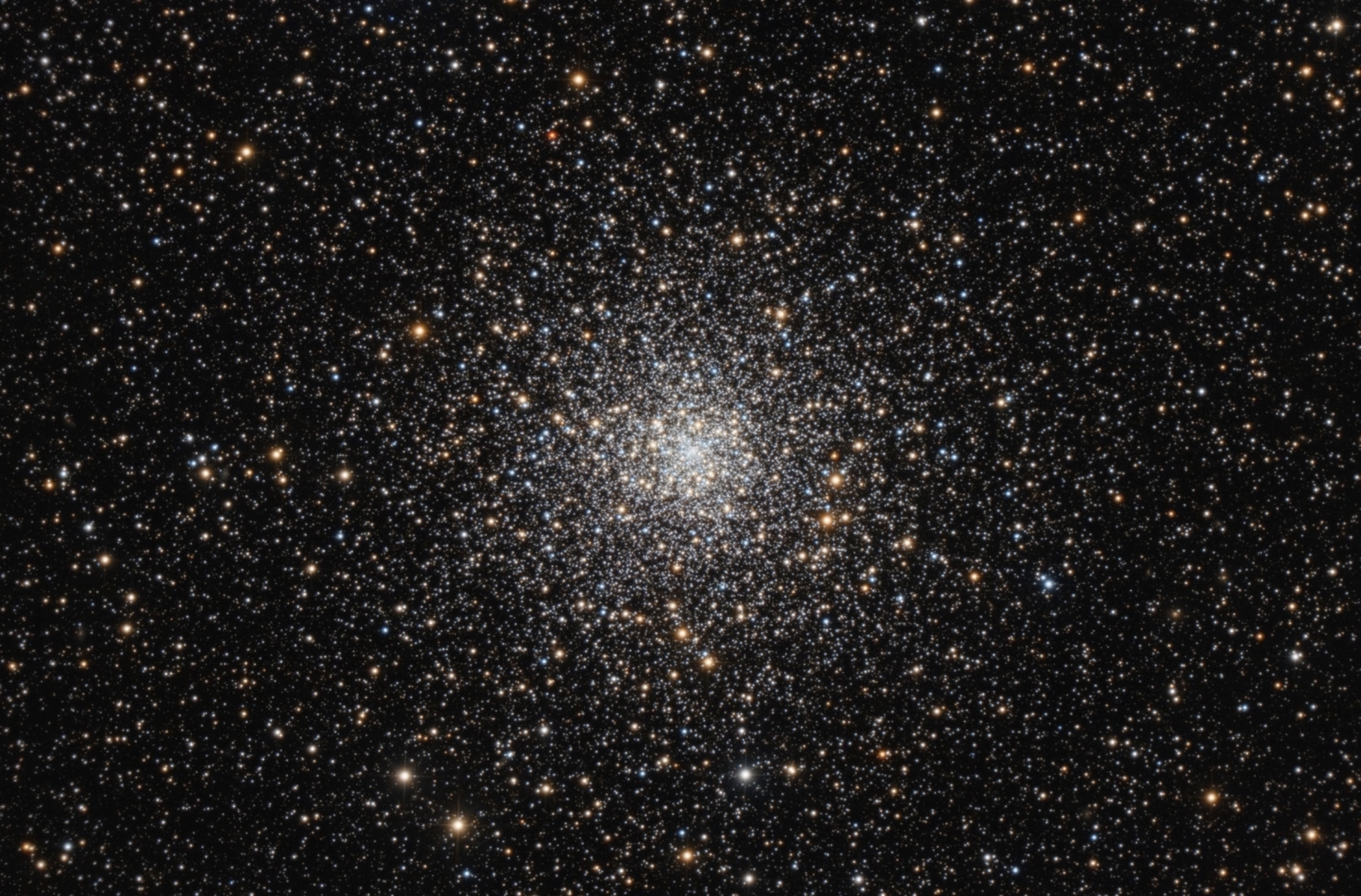
Monday, Oct 6, 2025
Globular Cluster NGC 6397
By Aldo Zanetti
NGC 6397 is a globular cluster located in the southern constellation of Ara (the Altar). It is one of the two closest globular clusters to Earth, along with Messier 4, making it a prime target for detailed astronomical studies. NGC 6397 has an apparent magnitude of approximately 6.68, which is just at the limit of naked-eye visibility under very dark and clear skies. It is easily observable with binoculars or a small telescope. The cluster has an apparent angular diameter of about 32 arcminutes, which is slightly larger than the apparent diameter of the full moon. This corresponds to a physical diameter of roughly 34 light-years. The cluster is located approximately 7,800 light-years from Earth, making it one of the nearest globular clusters. Its position in the galactic halo is notable as it has undergone a "core collapse" and the central area is extremely dense. NGC 6397 is an ancient object, with an estimated age of about 13.4 billion years. Its stars are metal-poor, with a metallicity ([Fe/H]) of approximately -1.76, meaning their abundance of elements heavier than hydrogen and helium is significantly lower than the Sun's. This low metallicity is a key characteristic of stars that formed in the early universe, making them valuable for studying the galaxy's initial formation. It is one of about 20 globular clusters in the Milky Way that has undergone a core collapse, where the core has contracted to a very dense stellar agglomeration. This extreme density makes it an ideal environment for studying stellar dynamics, including the formation of blue straggler stars and the segregation of more massive stellar remnants to the core. Early studies of the cluster's core revealed a high concentration of white dwarfs.
FLI 16803
Omegamon LRGB
ASA
ASA Newt 500/1900
NINA, Pixinsight
